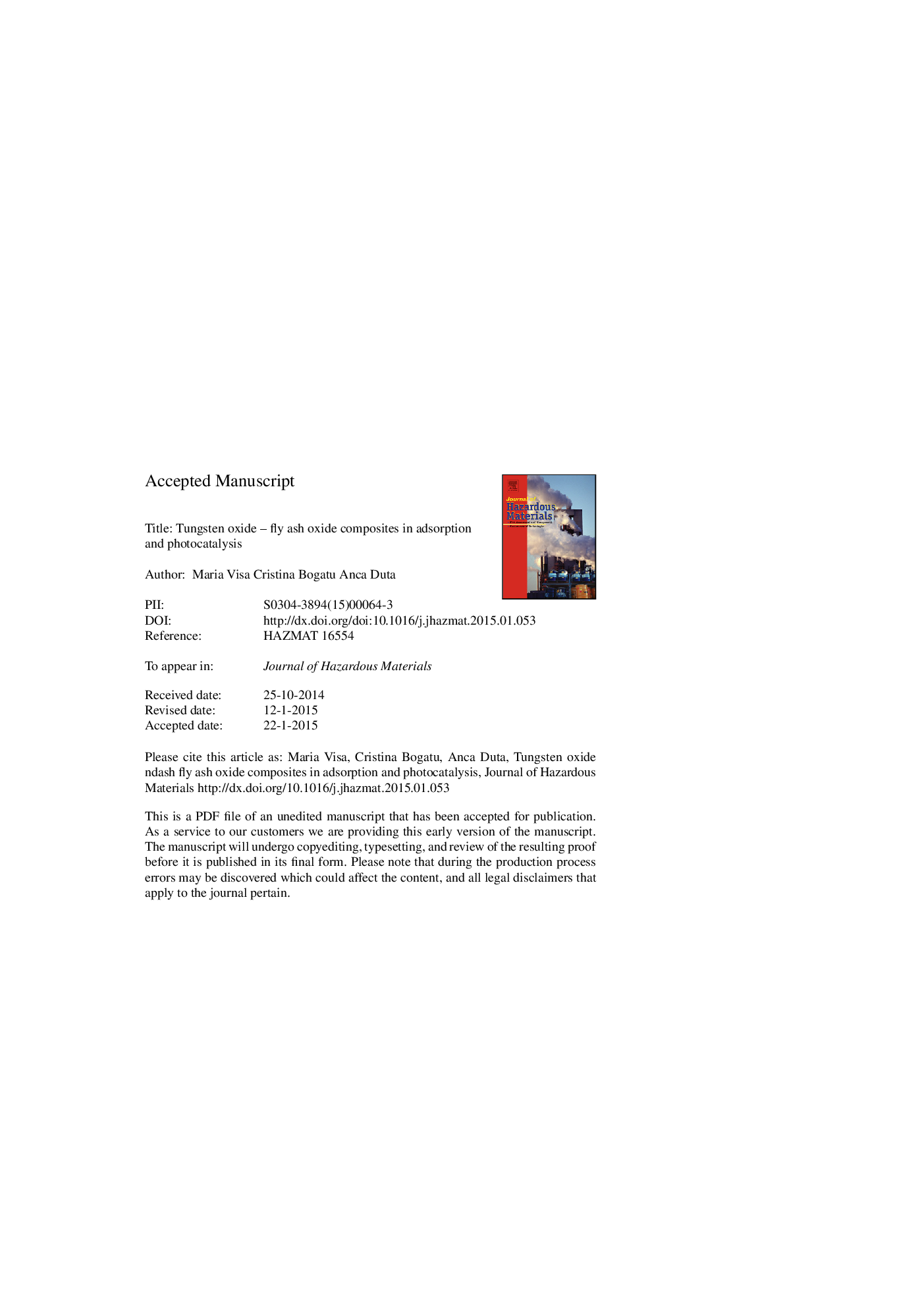| Article ID | Journal | Published Year | Pages | File Type |
|---|---|---|---|---|
| 576203 | Journal of Hazardous Materials | 2015 | 57 Pages |
Abstract
A novel composite based on tungsten oxide and fly ash was hydrothermally synthetized to be used as substrate in the advanced treatment of wastewaters with complex load resulted from the textile industry. The proposed treatment consists of one single step process combining photocatalysis and adsorption. The composite's crystalline structure was investigated by X-ray diffraction and FTIR, while atomic force microscopy (AFM) and scanning electron microscopy (SEM) were used to analyze the morphology. The adsorption capacity and photocatalytic properties of the material were tested on mono- and multi-pollutants systems containing two dyes (Bemacid Blau - BB and Bemacid Rot - BR) and one heavy metal ion-Cu2+, and the optimized process conditions were identified. The results indicate better removal efficiencies using the novel composite material in the combined adsorption and photocatalysis, as compared to the separated processes. Dyes removal was significantly enhanced in the photocatalytic process by adding hydrogen peroxide and the mechanism was presented and discussed. The pseudo second order kinetics model best fitted the experimental data, both in the adsorption and in the combined processes. The kinetic parameters were calculated and correlated with the properties of the composite substrate.
Related Topics
Physical Sciences and Engineering
Chemical Engineering
Chemical Health and Safety
Authors
Maria Visa, Cristina Bogatu, Anca Duta,
